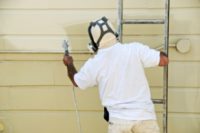OSHA wants to change respiratory protection standard
Fit-testing flexibility is the goal
OSHA has issued a Notice of Proposed Rulemaking to add two quantitative fit-testing protocols to the agency's Respiratory Protection Standard. The protocols would apply to employers in the general, shipyard and construction industries.
New fit-test protocols considered
Appendix A of the standard contains mandatory respirator fit-testing methods that employers must use to ensure their employees' respirators fit properly and protect the wearer. The standard also allows individuals to submit new fit-test protocols for OSHA approval. TSI Incorporated submitted an application for new protocols for full-facepiece and half-mask elastomeric respirators, and filtering facepiece respirators.
The existing standard contains mandatory testing methods to ensure that employees' respirators fit properly and are protective. The standard also states that additional fit-test protocols may be submitted for OSHA approval. TSI Incorporated submitted an application for new protocols for full-facepiece and half-mask elastomeric respirators, and filtering facepiece respirators. The proposed protocols are variations of the existing OSHA-accepted PortaCount® protocol, but differ from it by the exercise sets, exercise duration, and sampling sequence.
Public comments sought
The agency invites the public to comment on the accuracy and reliability of the proposed protocols, their effectiveness in detecting respirator leakage, and their usefulness in selecting respirators that will protect employees from airborne contaminants in the workplace. More specific issues for public comment are listed in the Federal Register notice.
Individuals may submit comments electronically at www.regulations.gov, the Federal e-Rulemaking Portal. Comments may also be submitted by mail or facsimile; see the Federal Register notice for details. The deadline for submitting comments is Dec. 6, 2016.
Intent of change
This proposed rulemaking would allow employers greater flexibility in choosing fit-testing methods for employees. The proposed rule would not require an employer to update or replace current fit-testing methods, as long as the fit-testing method(s) currently in use meet existing standards. The proposal also would not impose additional costs on any private- or public-sector entity.
Looking for a reprint of this article?
From high-res PDFs to custom plaques, order your copy today!





